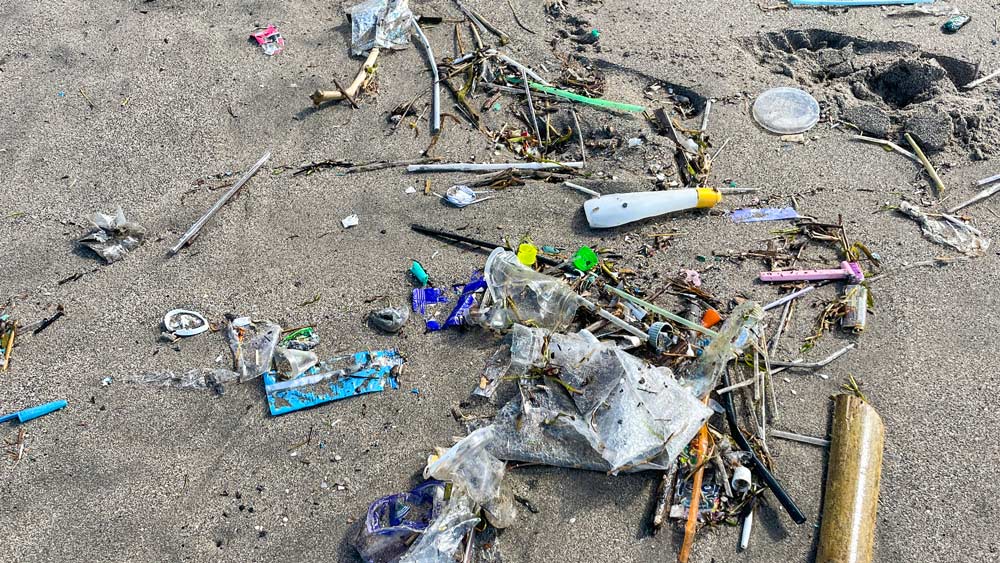Your Cart is Empty
Menu

Isn't it just a plastic straw?
December 13, 2021 3 min read
ABOUT THE BRIEF USE OF A SINGLE-USE ITEM AND ITS DEVASTATING CONSEQUENCES
 Daily, 3 billion plastic straws are used worldwide and usually discarded after just a few minutes
. Unlike plastic bags or coffee-to-go cups, in Germany
much less awareness of the damage plastic straws cause to our environment
. In Germany alone, 40 billion single-use plastic straws are consumed every year. That’s 1.3 plastic straws per person per day. They are relatively small and weigh only a few grams –
how much plastic is that already?
Daily, 3 billion plastic straws are used worldwide and usually discarded after just a few minutes
. Unlike plastic bags or coffee-to-go cups, in Germany
much less awareness of the damage plastic straws cause to our environment
. In Germany alone, 40 billion single-use plastic straws are consumed every year. That’s 1.3 plastic straws per person per day. They are relatively small and weigh only a few grams –
how much plastic is that already?
It is the compact size of plastic drinking straws that makes them so deadly to marine life.
HOW DO PLASTIC STRAWS END UP IN OUR OCEANS?

Every 7th item found on beaches and rivers is a single-use plastic straw. How can that actually be? Although plastic straws are made of polypropylene and are therefore technically recyclable, recycling machines have difficulty properly detecting the thin drinking tubes. Plastic drinking straws disrupt the recycling process, clog machines, and can even damage them.
So they are not recycled, but end up in landfills and waste incineration plants. Collected waste that reaches landfills often passes through several stages where the waste is stored outdoors and can easily be blown away – e.g., at ports, directly by the water. As soon as they reach a body of water, it's time to head to the final destination: the ocean, even if it is hundreds of kilometers away.
THE PLASTIC STRAW AND OIL PRODUCTION
 Did you know that what you're sucking on is hundreds of millions of years old?
Did you know that what you're sucking on is hundreds of millions of years old?Like almost all types of plastic, it is Polypropylene from petroleum manufactured. The petroleum we consume today – by the way 15,352,722,000 liters per year worldwide – originated hundreds of millions of years ago .
Crude oil must be promoted, which is not only a complex process, but to major environmental pollution leads. Fires, accidents, and leaks regularly contaminate air and water. The extraction methods are becoming increasingly dangerous and environmentally harmful. The World Offshore Accident Database recorded more than 5,000 accidents for offshore operations from 1974 to 2004.
PLASTIC IN YOUR MOUTH AND IN YOUR BODY?

In acidic or alcoholic beverages, the Release of plasticizer BPA (Bisphenol A) from the straw . The body confuses this with the female sex hormone estrogen. According to studies, this can lead to Cancer, diabetes, and cardiac arrhythmias and impotencelead.
“The average level of Bisphenol A in human blood is now higher than the concentration that can cause impairment of sexual development in mice.”
— bund.net
USED FOR 5 MINUTES, 500 YEARS ON THIS EARTH
 The short life of a plastic straw does not end even when a person finishes using it.Single use
disposed of. It can take up to until the material has completely decomposed.
500 years
pass. During the transfer, it does not of course disappear without a trace, but becomes
Microplastic
- microscopic
small plastic particles, which are often absorbed even faster by birds and marine animals and to thefatal end the animals can lead.
The short life of a plastic straw does not end even when a person finishes using it.Single use
disposed of. It can take up to until the material has completely decomposed.
500 years
pass. During the transfer, it does not of course disappear without a trace, but becomes
Microplastic
- microscopic
small plastic particles, which are often absorbed even faster by birds and marine animals and to thefatal end the animals can lead.
ECOLOGICAL ALTERNATIVES TO 3,285,000 TONS OF PLASTIC WASTE
 Even if you already avoid plastic straws at home, we still receive many plastic straws in the
Hospitality
, without even having asked for it. In addition to the more ecological disposable alternatives, such as drinking straws made of paper, cornstarch, or bamboo, the question arises about reusable, recyclable, andgastronomy-suitable alternatives
We at HALM focus on sustainability
Glass Drinking Straws: the test winner, with ourreusable straws compared.
Even if you already avoid plastic straws at home, we still receive many plastic straws in the
Hospitality
, without even having asked for it. In addition to the more ecological disposable alternatives, such as drinking straws made of paper, cornstarch, or bamboo, the question arises about reusable, recyclable, andgastronomy-suitable alternatives
We at HALM focus on sustainability
Glass Drinking Straws: the test winner, with ourreusable straws compared.
Sources
https://www.oceanconservancy.org/wp-content/uploads/2018/07/Building-A-Clean-Swell.pdf
https://4ocean.com/blogs/blog/the-4ocean-habit-from-plastic-to-reusable-straws
http://www.zeit.de/wissen/umwelt/2010-04/oil-spill-drilling-rig-background/page-2
https://www.bund.net/chemie/hormonelle-schadstoffe/bisphenol-a/
https://www.zeit.de/2018/20/plastic-straws-ban-eu
https://www.umweltbundesamt.de/sites/default/files/medien/479/publikationen/4453.pdf
http://www.daserste.de/information/wissen-kultur/w-wie-wissen/sendung/plastikmuell-128.html
https://www.bund.net/chemie/achtung-plastik/schadstoffe-in-plastik/
http://www.bfr.bund.de/en/questions_and_answers_on_bisphenol_a_in_consumer_products-7195.html

